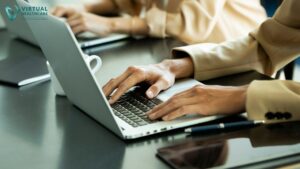Let’s be honest – medical bills can look confusing, right? All those numbers, codes, and terms… It’s easy to feel lost. But behind that one piece of paper is a whole process called medical billing. In simple terms, medical billing is how hospitals and clinics get paid for the treatments they give. It’s like connecting the dots between doctors, insurance companies, and patients. And the people who make this possible? Professional medical coders.
They take all the doctor’s notes and turn them into codes that insurance companies can understand. Each test, injection, or surgery has its own code – and those codes decide how much the insurance company will pay.
So yeah, there’s a lot happening behind the scenes every time you visit a doctor.
Why It’s Important
You might wonder – why does all this matter?
Because if something goes wrong in billing – say, a missing code or wrong information – the hospital doesn’t get paid on time, or you might get overcharged.
When everything goes right:
- Hospitals get their payments quickly
- You get clear, correct bills
- Insurance companies process claims faster
Basically, smooth billing keeps everyone happy and stress-free.
Step 1: Patient Registration
This is the very first step. When you visit a clinic or hospital, you share your basic details – your name, contact info, and insurance number.
It might seem like a boring formality, but getting this info right is super important. Even a small spelling mistake or wrong number can mess things up later.
Step 2: Checking Insurance
Next, the hospital checks your insurance details. They confirm whether your insurance is active and what treatments it covers.
This step helps you avoid any surprises later. For example, if your plan doesn’t cover a test or procedure, you’ll know beforehand instead of getting shocked by the bill later.
Step 3: Medical Coding
Here comes the fun (and slightly nerdy) part – medical coding.
This is where professional medical coders step in. They read what the doctor has written – like “blood test” or “X-ray” – and turn it into special numeric or letter codes.
Think of it like a translation: coders make the doctor’s notes understandable for the insurance company.
For example:
- A fever consultation has one code
- A blood test has another
- A surgery has a different one
These codes decide how much the hospital gets paid. That’s why accuracy here is super important.
Step 4: Making and Sending Claims
Once everything is coded, the hospital creates a medical claim.
This claim has all the details – the patient info, doctor info, treatment codes, and total charges.
Then it’s sent to the insurance company (usually online).
If everything’s correct, it gets approved and processed quickly.
But if there’s even one tiny mistake – boom, delay! So, checking everything properly before sending is a must.
Step 5: Getting Payments
After the insurance company reviews the claim, they send the payment to the hospital or clinic.
This amount depends on what your insurance plan covers. Once received, the payment is added into the hospital’s system (this is called payment posting).
It’s basically how the hospital keeps track of who has paid and what’s still due.
Step 6: Fixing Claim Issues
Sometimes, things don’t go smoothly – the insurance company might reject a claim.
Why?
- Wrong or missing code
- Insurance expired
- Service not covered under plan
When that happens, the billing team reviews the problem, fixes it, and resends the claim. It’s like retrying a failed payment – just with more paperwork!
Thankfully, skilled medical coders and billers know how to handle these hiccups fast.
Step 7: Sending Bills to Patients
Once the insurance company has paid their part, the hospital sends you a bill for whatever is left – maybe a small co-pay or uncovered service.
You’ll usually get a clear statement that shows:
- What services you got
- What insurance paid
- What you still owe
It’s like the final summary of everything.
Why Professional Medical Coders Matter
Now you can probably see how important professional medical coders are. They make sure every little detail is correct, every treatment is coded right, and every claim is complete before it goes out.
Without them, billing would be a total mess – with delays, rejected claims, and unhappy patients.
So yes, they’re the real unsung heroes in healthcare!
Final Takeaway
Medical billing might sound complicated, but it’s really just a series of steps that make sure doctors get paid and patients get clear, accurate bills.
When every step is done right – from registration to coding – the whole process becomes smooth and stress-free.
And now, with Virtual Healthcare tools, it’s even easier! Digital systems handle most of the billing work – like generating claims, checking codes, and managing payments. That means fewer mistakes, faster approvals, and a lot less confusion for everyone.
So next time you see a hospital bill, just remember – there’s a whole team (and some smart tech) working behind the scenes to make sure everything runs smoothly.
FAQs
- What exactly is medical billing?
It’s the process of turning your doctor visits and treatments into bills that insurance companies can understand and pay. - Who are professional medical coders?
They’re the people who take the doctor’s notes and turn them into special codes used for billing and insurance. - Why do claims sometimes get rejected?
Usually because of small mistakes like wrong codes, missing info, or expired insurance. - How long does the billing process take?
It can take anywhere from a few days to a few weeks, depending on how quickly the insurance company responds. - How does Virtual Healthcare make billing easier?
Virtual Healthcare uses smart software to handle coding and billing automatically – so everything happens faster, with fewer errors and less paperwork.
Copyright: All rights reserved. Unauthorized reproduction or distribution of any content on this site is prohibited. For permissions, please contact https://virtualoplossing.in/


